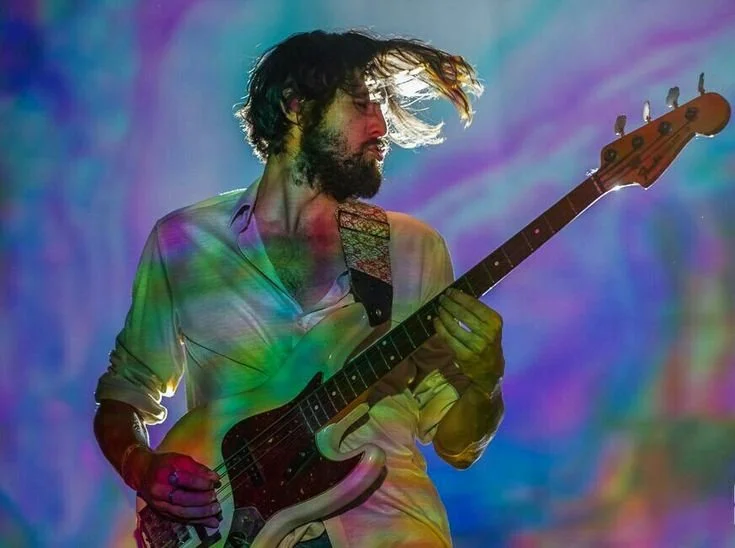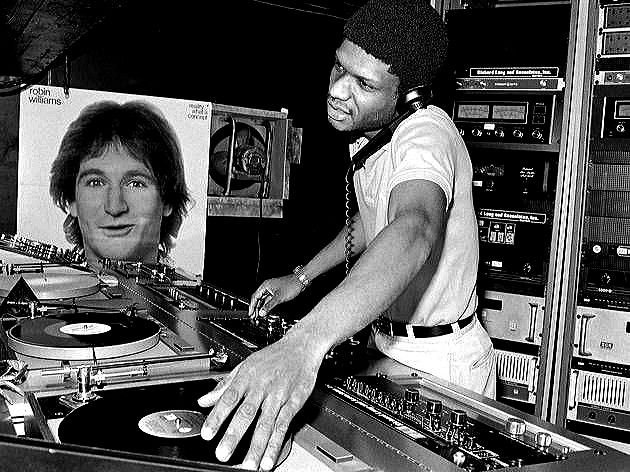Set. Setting. Sound
Published by Psychedelics Uncensored by Psychedelics.com
Because set and setting isn’t just a vibe - it’s the whole damn journey.
In case you missed the “Set. Setting. Sound” newsletter I curated for Psychedelics Uncensored, you can read it here and find artists, songs, curated playlists, and more. Below, is the piece I wrote to accompany the newsletter.
I even had the chance to chat with multi-instrumentalist Cam Avery, bassist for Tame Impala, about the profound connection between psychedelics and music, and featured his thoughts in there!
Isn’t All Music Psychedelic? A Quick Review of Sonic Journeys, Then and Now
Music, as a tool for ceremony and connection, has evolved from ancient traditions to modern forms, each uniquely suited to guiding the human spirit through transformative experiences. For ancient peoples, music was deeply intertwined with the sacred. The Greeks, the Egyptians, the Native Americans, the Nubians, the Zhou, the Celts, the Inca, the Māori, and many more, all banged the drum as a form of communication and as a spiritual practice, connecting the community to ancestral wisdom and the rhythms of the earth. Tibetan monks and monastics across the world used sacred chants and harmonic singing to invoke meditative states, their voices creating a resonant, almost otherworldly atmosphere conducive to transcendence.
Image: Heron Drums
In the 20th century, bands like the Grateful Dead and Phish pioneered a new form of ceremonial music. The Grateful Dead’s live performances, characterized by extended improvisational jams, became ritualistic gatherings where audiences collectively explored altered states of consciousness. Songs like “Dark Star” and “Terrapin Station” became spiritual journeys in their own right. Phish carried this torch into the next generation, creating intricate, genre-blurring compositions like “You Enjoy Myself” and “Reba” that offered moments of euphoria, introspection, and collective celebration. Their live shows became communal rites, where the interplay between band and audience was a ceremony of spontaneity and shared energy.
In contemporary music, Tame Impala, the project of Kevin Parker, has become synonymous with introspection and sonic exploration. Albums like Currents and The Slow Rush seamlessly blend dreamy psychedelia with cutting-edge production, crafting immersive soundscapes that invite listeners on deeply personal mental journeys.
East Forest, on the other hand, adopts a more explicitly ceremonial approach. His albums, such as Music for Mushrooms and A Soundtrack for the Psychedelic Practitioner, are intentionally designed to guide listeners through healing and psychedelic experiences. By fusing ambient electronic textures with grounding elements like spoken word, piano, and natural sounds, East Forest bridges the gap between modern technology and ancient traditions.
I had the chance to get with multi-instrumentalist Cameron Avery’s —bassist for Tame Impala—thoughts about the profound connection between psychedelics and music.
“I think the connection between psychedelics and music starts with intention and the power of suggestion,” he reflected. “An obvious example is The Beatles and the leap between Rubber Soul and Revolver. They had no idea what LSD was, let alone its effects on the frontal lobe, so the result was very organic and of the time. They went into it with an openness—it was experimental, and the music reflected that. Innovation became the result.”
Avery has earned praise for his wide-ranging musical talent that extends well beyond psychedelic rock. His solo album Ripe Dreams, Pipe Dreams reveals a deep affinity for classic crooners like Sinatra and Elvis, blending vintage balladry with a smoky baritone and lush orchestration. His ability to channel the elegance of the American songbook while giving it a modern edge is a testament to his rare artistic range—effortlessly bridging nostalgia and innovation in a way that feels both timeless and distinctly his own.
Image: Cameron Avery
This interplay of experimentation, openness, and intention underscores the profound synergy between music and altered states of consciousness, creating not just entertainment, but deeply transformative experiences.
This timeless connection between music and the human spirit continues to evolve, as artists today draw inspiration from both ancient traditions and modern innovation to craft soundscapes that heal and connect. This fusion of innovation and tradition is further exemplified by artists like Poranguí, who seamlessly blends ancestral wisdom with contemporary soundscapes to deepen the connection between music, healing, and the human spirit. A multi-instrumentalist, Poranguí draws on his Afro-Brazilian and Native American heritage, blending traditional drumming, flute, and vocal chants with looping technology to create immersive live experiences.
Electronic music further expands the map of the mind with artists like Nils Frahm, whose minimalist and emotive compositions bridge classical and electronic realms. Frahm’s use of piano, synthesizers, and innovative production techniques creates deeply immersive soundscapes, perfect for introspection and emotional exploration. On the communal front, electronic music artists like Bonobo and Jon Hopkins craft dynamic tracks designed for shared dance experiences, aligning body and mind with their rhythmic yet introspective beats.
These artists, from the ancient to the modern, illustrate the enduring power of music as a ceremonial tool. Whether guiding a dance floor into collective ecstasy or providing the soundtrack for a solo journey inward, they remind us that music is not merely entertainment—it is a means of connection, healing, and transformation.
The Transformative Power of Music, Dance, and Psychedelics
Music holds a timeless ability to dissolve barriers, unify individuals, and spark transformation. House music, born in underground clubs, became more than just a genre—it evolved into a modern ritual of connection. On sweat-slicked dance floors, the repetitive beats and soaring melodies offered solace and liberation. These communal spaces allowed fragmented souls to find healing, casting off the ego to rediscover the power of unity. Similarly, the rave culture of the 1990s expanded these rituals into grand celebrations where house music and MDMA combined to deepen emotional connection and dissolve social barriers, revealing a profound sense of collective joy and shared humanity. Though these spaces possessed high risk potential, the therapeutic potential of these experiences remain undeniable. The line between recreation and therapy is far thinner than often assumed, as both involve connection—whether to oneself, others, or something greater. Structured therapy emphasizes safety and introspection, while the spontaneity and freedom of recreational dance floors highlight the importance of joy as a healing force. Together, they teach us that healing and pleasure are not opposites but complementary forces. By fostering intention, safety, and understanding, all these spaces can transform lives and dissolve the stigma surrounding altered states of consciousness.
The Legacy of Connection and the Eternal Dance
The Paradise Garage, with its revolutionary sound system and the legendary DJ Larry Levan, exemplified how music transcends mere entertainment to become a vehicle for healing and liberation.
Ultimately, the dance floor—whether physical or metaphorical—is a place where the boundaries between self and other dissolve, fostering a deep sense of connection. The rhythm entrains the heart and breath, grounding the individual while elevating the spirit. These moments, imprinted on the soul, remind us that connection and healing are accessible through movement, music, and community. In a world often defined by disconnection, house music and the modern dance floor serve as powerful reminders of humanity’s innate need to move, to feel, and to heal. Through intention and understanding, we can honor these transformative rituals and their enduring significance in uniting and renewing the human spirit.
Sound is sacred. Always has been.
I encourage you to start curating playlists; by genre, by how the music makes you feel, the setting you'd play it in, or sonic similarities like instrumentation and tempo. Begin simply: notice how certain tracks affect your mood or energy, and use that as your guide. From there, let your intuition lead as you organize, explore, and build a personal musical library that reflects your emotional landscape.
Find playlists I’ve shared and curated + Read the full newsletter HERE
Rock On.




